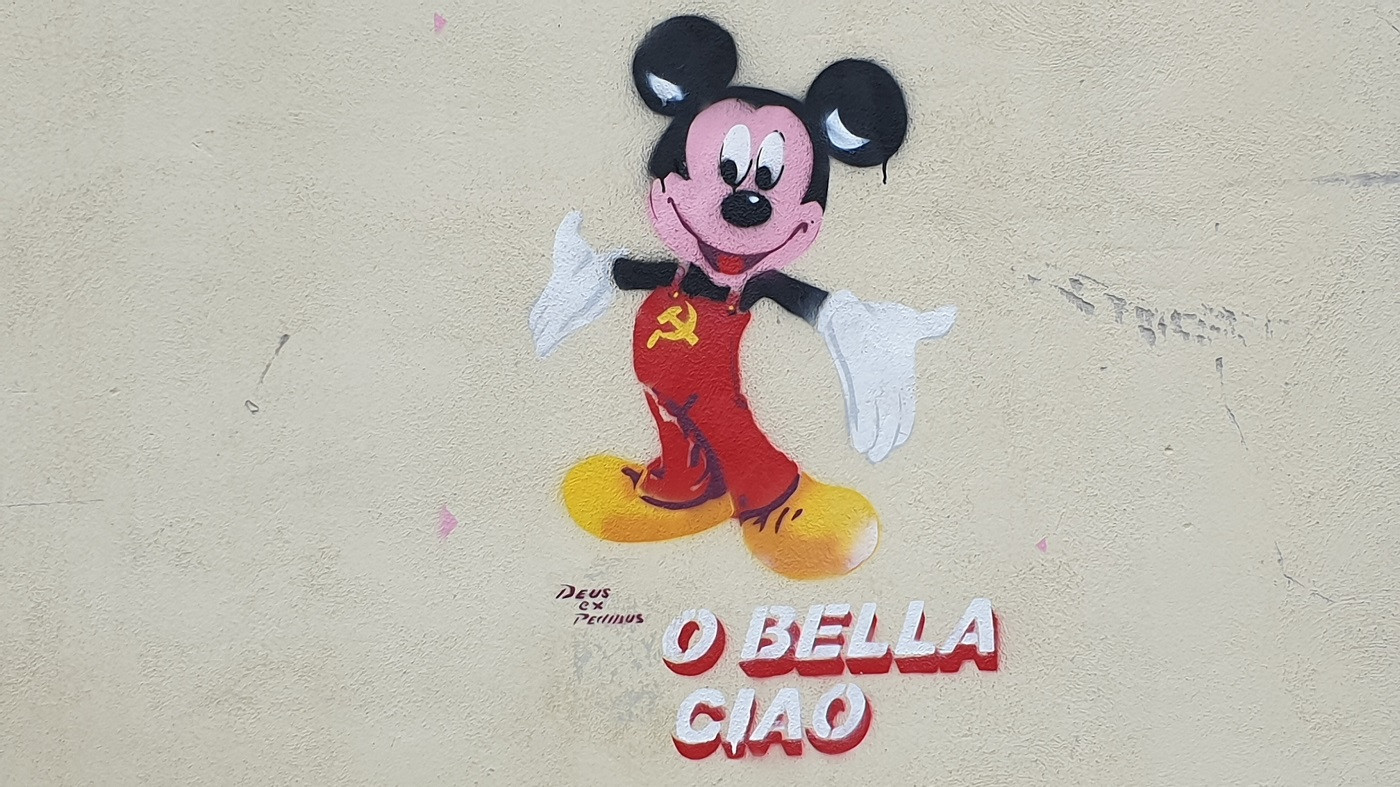
Street Art in Florence - Mickey Mouse goes red
Everyone
knows Mickey Mouse, the very famous
cartoon character created in 1928 by Walt Disney and Ub Iwerks. Mickey Mouse and his companions: Minnie Mouse the girlfriend, Morty and Ferdie the grandchildren, Goofy
the best friend, Pluto the faithful
dog, and then Peg Leg Pete, Chief Seamus O'Hara, Detective Casey, Eega Beeva etc. A complex world that has
entertained and fascinated children for almost 100 years, without showing signs
of going out of fashion. Here we see him in a particular outfit: white gloves,
thick yellow shoes, but the usual red shorts with white buttons are replaced by red overalls. And on his chest he has a hammer
and sickle! Mickey has become a communist. Perhaps to celebrate the centenary
of the birth of the Italian Communist Party (21 January 1921)? His new ideology
is confirmed by the inscription below "O
bella ciao", the anthem of the anti-fascist partisans during World War
II, a song that has come back into fashion through modern television fictions.
The
artist is signed as Deus Ex Pedibus,
a nickname coined from the Latin phrase Deus
Ex Machina, which indicated in the Greco-Roman theater the apparition of a
deity, descended on the stage with a complicated machinery. In reality Mickey Mouse, Donald Duck and companions are apolitical today, but it was not
always like this. At the time of the Cold War they were decidedly anti-Soviet
and this was clearly evident in the stories. One for all the brilliant comic
"Uncle Scroodge: A Cold Bargain", created by Carl Barks in 1957. Uncle Scrooge is hunting for Bombastium,
a mysterious element that has the ability to transform water into ice cream of
a thousand flavors, a colossal business. The secret agents of Brutopia (Russia)
are also on its tracks. Through various adventures, we get to an auction where Uncle Scrooge offers a
trillion dollars for the Bombastium,
the Brutopians reply by offering a trillion dollars and all the sinks of their
happy people. To Scrooge's question
"How many sinks does the happy Brutopian people have?" they answer "five!". So he
offers a trillion dollars and six sinks, winning the auction! Satire is
evident.
On
the same street wall and by the same author we also find “la vispa Teresa”, from the
nursery rhyme La farfalletta by Luigi
Sailer of 1850, not as famous as Mickey Mouse, but known by all Italian children.
The first verses:
The lively Teresa had among the grass
grabbed while flying
a gentle little butterfly
and all joyful
holding it alive
she screamed out
loud:
“I got it! I got
it! ”.
In
the verses that follow the little girl regrets having hurt the animal and lets it
go back to the grass. We find a profound ecological and animal rights meaning in these verses.
Florence, Viale Giovane Italy.

Lively Teresa chasing butterflies.



